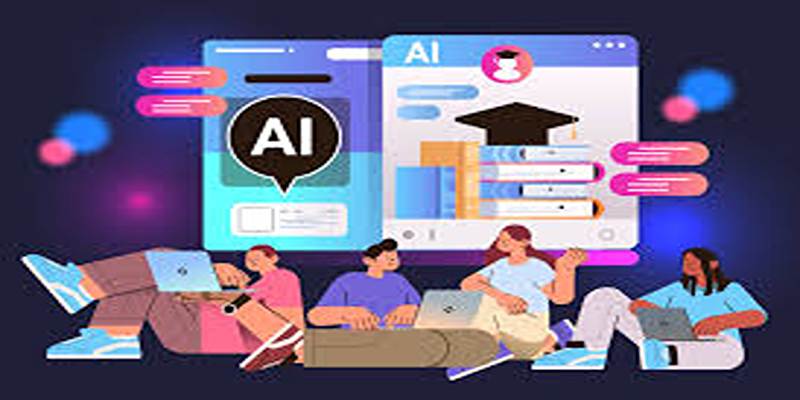Writers once had time; now, they face constant deadlines. Content creation needs to be faster, cleaner, and better, with the pressure never easing. Whether you're managing a blog, running an e-commerce site, or handling social media, the workload is relentless. But artificial intelligence is quietly transforming the scene. It's not a gimmick or a replacement for human creativity; it's a tool that enhances it. AI brings speed, memory, and pattern recognition to enable creators to work faster, experiment with ideas more effectively, and reach larger audiences. AI does not displace the creator—it enhances the process, enabling content creation to be smarter and more sustainable.
Breaking Down the Workflow
When most people think of AI in writing, they picture robotic sentences or automatic article generators. That's a shallow view. The best use of AI happens behind the scenes—in the planning, outlining, data crunching, and optimization. It's about clearing away the grunt work so creators can focus on the parts that matter most.
Let's begin with idea generation. Great content begins with a good idea, and this is usually the most difficult part. AI systems that have been trained on billions of documents can identify trends, propose topics, and assist in outlining what your audience may be interested in next. It's brainstorming with a research assistant who never gets tired.
Next is structure. For long-form pieces, white papers, or even podcasts, AI can help break down a large concept into manageable parts. That outline becomes the spine of your piece, and the time you save here adds up fast.
Then there’s research. AI doesn’t just summarize Wikipedia articles. It can cross-reference reports, dig into niche blogs, and surface lesser-known stats in seconds. The kind of background work that used to take an hour can now take a minute, freeing you up to think about how to present the story instead of just collecting facts.
Once the writing begins, AI still has a place. You might use it to rephrase awkward sentences, fix grammar quickly, or test variations of a headline. These aren’t major creative decisions, but they slow down the process. Offloading them keeps your focus on the message.
After publishing, AI can track performance, analyze reader behavior, and help tweak future content based on what worked. This makes each piece smarter than the last, building a feedback loop that’s hard to create manually.
The big win here isn’t that AI does the work. It’s that it removes friction. It saves energy for the things machines can’t replicate—your voice, your point of view, your edge.
What Makes the Output Better, Not Just Faster?
Speed isn't enough. The internet is already full of content that feels rushed, shallow, or fake. AI's real promise is making content better without making the process harder. That comes down to how you use the tools, not whether you use them.

One of the most overlooked features of AI-assisted writing is consistency. If you’re a solo creator or part of a small team, you know how hard it is to keep tone, style, and pacing aligned across platforms. AI can help standardize the invisible stuff—sentence length, rhythm, formatting—so your brand voice feels coherent even when a post is written at 2 a.m. and another during lunch.
AI also boosts accuracy. With access to updated databases and fact-checking features, you’re less likely to misquote a stat or miss a detail. This matters in industries like healthcare, education, or finance, where one error can undo credibility in a flash.
And then there’s testing. A/B testing headlines, intro hooks, or call-to-action phrases used to be a luxury for big teams. AI makes it easy to generate multiple versions quickly, so you can test them live and learn what gets traction. It’s like running a mini experiment with every post.
This kind of improvement isn’t flashy. It doesn’t wow you in the moment. But it stacks up. More accuracy, more consistency, and more feedback mean better writing—not just more of it.
Where Creativity Still Rules the Room?
For all the things AI can do, there’s still a line it can’t cross. It can’t tell a personal story that moves someone. It can’t write a joke with perfect timing or build suspense with just the right pause. It doesn’t know how it feels to be stuck, or inspired, or doubting everything halfway through a sentence. That’s where human creativity holds its ground.

The best creators use AI the way a musician uses a metronome—not to create but to keep things sharp. They bring their experiences, their worldview, and their weird ideas. AI brings structure, speed, and scale. Together, they're capable of output that's more human, not less.
Some writers resist AI because it feels like cheating. That's fair. But think of it like a calculator. It doesn't make you bad at math—it just speeds up the stuff you already know how to do. If you understand voice, pacing, and nuance, you'll still need to shape the final product. AI won't give you an original insight. But it might help you get to it faster or give you five half-formed ones to sharpen.
In a time when content is everywhere and attention spans are short, the edge goes to the creators who can stay nimble. Not just fast—but clear, intentional, and human. AI is part of that toolkit now. You don't need to love it. But you probably can't ignore it anymore, either.
Conclusion
AI is transforming content creation by streamlining processes and enhancing creativity. It provides valuable support in idea generation, research, and optimization, allowing creators to focus on the core aspects that require human touch. While AI can’t replace the authenticity and emotion behind great content, it helps eliminate repetitive tasks, making the creation process faster and more efficient. Embracing AI as an assistant, not a replacement, will empower creators to produce better, more impactful content while staying ahead in an increasingly competitive digital landscape.











